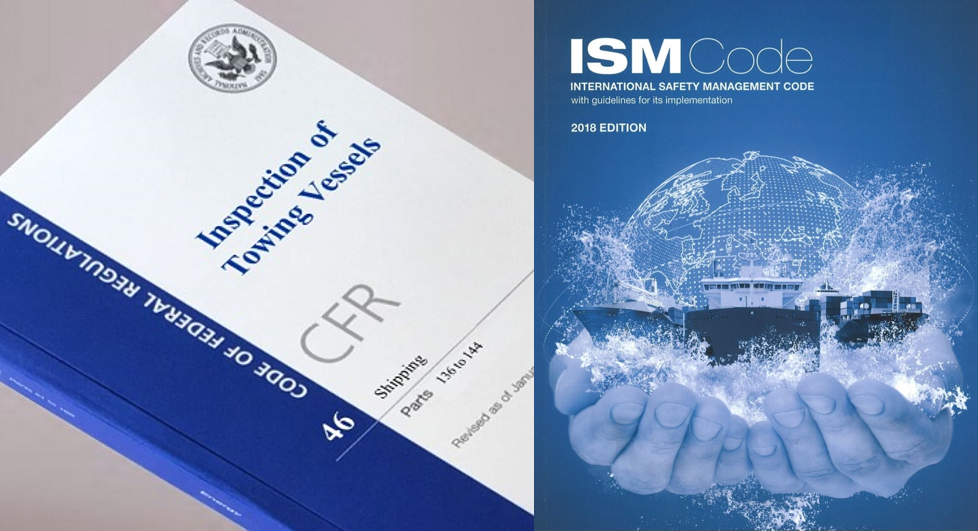Key Differences Between the ISM Code and Subchapter M
The ISM Code requires shipping companies to implement a safety management system designed to should ensure safe operating practices and should be complied to worldwide – tugs, however, are mostly not required to do so. However, in the U.S., U.S.-flag towing vessels should comply to Subchapter M. This blog provides insight on the similarities and differences between the two.
ISM Code
During the late 1980s, various serious accidents including the capsizing of the Herald of the Free Enterprise highlighted the contribution of human factors and management faults and led to the IMO to adopt the Guidelines on Management for the Safe Operation of Ships and for Pollution Prevention. After a few changes, these guidelines were developed into the International Management Code for the Safe Operation of Ships and for Pollution Prevention (ISM Code) in 1993, and they became mandatory in 1998.
The ISM Code obliges shipping companies to develop and implement a safety management system. It provides functional requirements such procedures for the safe operation of ships and protection of the environment, defined levels of authority and communication, procedures on incident and non-conformity reporting, emergency response and communication and procedures for internal audits and management reviews.
Though the ISM code may be applied to all ships, it is not an obligation for all ships, and most tug boat companies are not obliged to implement a safety management system as per IMO regulations.
Subchapter M
However, U.S.-flag towing vessels that are engaged in pushing, pulling or hauling alongside are subject to Subchapter M. This part of the Code of Federal Regulations was developed as a response on, among others, two major towing vessel incidents in U.S. waters in the early 2000’s. In the first major accident five people died when their vehicles went into the water when a bridge collapsed after being struck by a towing vessel. In the second major accident, 14 people lost their lives under similar circumstances.
After these two major incidents the Coast Guard and Maritime Transportation Act of 2004 reclassified towing vessels as vessels subject to inspection and specific requirements were established for a safety management system.
Similarities and differences between the ISM Code and Subchapter M
Both the ISM Code and Subchapter M state the requirement of a Safety Management System. The major similarity between the ISM Code and Subchapter M is the emphasis on the process of risk assessments and the importance of having a safety management system implemented in the organization.
The ISM code clearly emphasizes the need of having a process for risk assessment in place. This is also stated in Subchapter M, as an element of the Towing Safety Management System (TSMS) and has a particular section on the identification and mitigation of health and safety hazards.
Subchapter M is more detailed than the ISM Code, as it advises on the steps to be taken in the preparation phase of the towing operation, such as the selection of the appropriate vessel that has adequate maneuverability and horsepower and the selection of appropriate rigging and towing gear.
Further, Subchapter M addresses several high-risk tasks (e.g. confined space entry, working aloft), specific workplaces, high-risk conditions on board and equipment. With this, guidance is given on what type of risk controls should be selected in order to eliminate risks.
One large difference between the ISM Code and Subchapter M should be noted. For vessels that should comply with Subchapter M, it is not necessarily mandatory to implement a safety management system in order to obtain a Certificate of Inspection (COI), whereas this is mandatory for vessels that should be compliant with the ISM Code.
This and much more is discussed in the new third edition of the book Tug Use in Port, written by Henk Hensen. The chapter on ‘balancing safety’ which involves various subjects such as risk management, safety management systems, and the ISM code and Subchapter M is a contribution of Jan-Hendrik Hensen and Karen van Vliet.
The large-format hardback book is illustrated with a wealth of detailed diagrams, graphics and photographs. The book can be ordered at a price of €45 at The ABR Company Limited.

